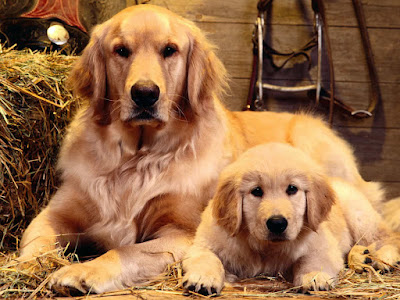Undoubtedly, you take pride in the unbreakable bond you share with your dog. You're familiar with the sight of their tail wagging frantically simply because they're overjoyed to see you. You observe their unwavering loyalty as they faithfully accompany you everywhere, as if their sole purpose in life is to ensure your safety. However, it's important to occasionally loosen this tight bond. While you understand this, your dog may not. This is why a seemingly ordinary night out with friends for you can become a distressing experience for your dog, who doesn't comprehend your absence or whether you'll return.
What is separation anxiety in dogs?
Dog separation anxiety is a condition in which dogs show signs of distress when they are left alone. It can affect dogs of all ages and breeds.
What are the symptoms of dog separation anxiety?
Discovering that your dog experiences anxiety when left alone can be a challenging realization, often evidenced by damaged carpets, claw marks on beloved furniture, and neighbors recounting the endless howling that filled the air in your absence.
Regrettably, some owners misconstrue these behaviors as mere mischief, failing to recognize that their furry companion is actually distressed and uncertain about how to cope with an empty home.
Here are common indicators of separation anxiety in dogs:
- Excessive panting.
- Restless pacing.
- Attempts to escape from the house.
- Destructive behavior towards furniture.
- Indoor accidents.
- Excessive barking or howling.
- Overwhelming excitement upon the owners' return.
Now, let's delve into the causes of separation anxiety in dogs before exploring potential solutions. These causes can range from early abandonment to genetic predispositions.
The most prevalent triggers of separation anxiety in dogs include:
- Insufficient training.
- Inadequate socialization.
- Fears related to specific elements or events inside or outside the house.
Life changes such as moving to a new home, alterations in daily routines, or the addition of a new family member.
Is it really dog separation anxiety?
Before embarking on any dog anxiety treatment, it's crucial to accurately identify your dog's behavior and determine whether it truly stems from anxiety. That intense barking session in your absence may be a reaction to a passing loud lorry, while chewed window sills might indicate acute boredom rather than separation anxiety.
Differentiating between the two can be challenging since you're not present to witness the behavior firsthand. Therefore, as a first step, it is often recommended to record your dog when they are alone. By reviewing the footage, you can gather valuable insights. If your dog barks incessantly within the first 10 minutes after you leave, it is likely a sign of anxiety. On the other hand, if they bark sporadically, take naps, and then resume barking, it's more probable that they are simply seeking entertainment and dealing with boredom through vocalization.
Dog separation anxiety training tips
Here are some dog separation anxiety training tips to help your furry friend cope with being alone:
Gradual desensitization: Gradually expose your dog to being alone by starting with short periods and gradually increasing the duration over time. This helps them become accustomed to your absence.
Create a safe space: Set up a designated area where your dog feels secure and comfortable when you're not around. Use their bed, toys, and familiar items to make it a soothing environment.
Practice leaving and returning: Practice leaving the house for short intervals and returning without making a big fuss. This helps your dog understand that your departures are temporary and that you will always come back.
Use positive reinforcement: Reward your dog for calm behavior when you leave and return. Offer treats, praise, and attention to reinforce positive associations with being alone.
Provide mental and physical stimulation: Engage your dog in activities that stimulate their mind and body. This can include puzzle toys, interactive games, or a vigorous exercise routine to help them release excess energy.
Establish a routine: Dogs thrive on consistency, so establishing a daily routine can provide a sense of security. Stick to regular feeding times, exercise schedules, and set times for leaving and returning.
Use anxiety aids: Consider using anxiety aids such as calming pheromone diffusers, anxiety wraps, or soothing music designed for dogs. These can help create a calming atmosphere when you're away.
Seek professional help if needed: If your dog's separation anxiety persists or worsens despite your efforts, consult a professional dog trainer or veterinarian. They can provide specialized guidance and recommend additional strategies or treatments.
Remember, each dog is unique, and it may take time and patience to find the most effective training approach for your furry companion. Stay consistent, be understanding, and offer plenty of love and reassurance as you work through their separation anxiety together.




